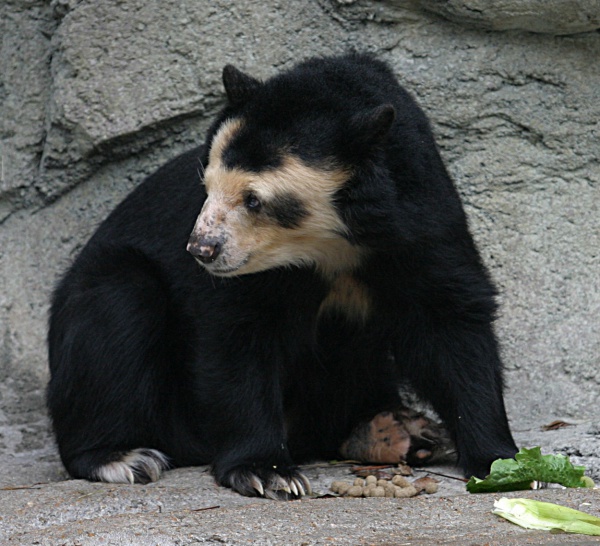Facts About Spectacled bear
The spectacled bear, also known as the Andean bear, is the only surviving member of the short-faced bear family and resides in South America. Unfortunately, due to habitat loss, it is now classified as Vulnerable. Despite being the largest land carnivore on the continent, this bear's diet is predominantly vegetarian. Its name derives from the distinctive beige or ginger-colored markings around its face and chest, giving it a unique appearance. These mid-sized bears exhibit sexual dimorphism, with males being larger than females.
You will primarily find spectacled bears in the Andes Mountains, where they inhabit various environments such as cloud forests, high-altitude grasslands, and dry forests. They are remarkable climbers, one of the few bear species that spend considerable time in trees. Typically solitary, these bears sometimes form small groups when food is abundant.
Unlike other bears, spectacled bears are more herbivorous, with only about 5-7% of their diet consisting of meat. They consume a wide range of vegetation, including tough plants that other animals might find hard to eat. Occasionally, they hunt small animals or even livestock.
Mating can occur throughout the year, but it peaks between April and June. Female bears usually give birth to one to three cubs during the dry season. These cubs stay with their mother for about a year before becoming independent. Sadly, spectacled bears face significant threats from poaching and habitat destruction, with human conflict being a major concern. Conservation efforts are underway, focusing on expanding protected areas, conducting research and monitoring, and involving local communities in conservation programs.
The spectacled bear has also made its way into popular culture, notably through characters like Paddington Bear and various conservation documentaries. Many organizations are dedicated to studying and protecting these bears, working diligently to raise awareness and enforce anti-poaching laws.

 Brazil
Brazil